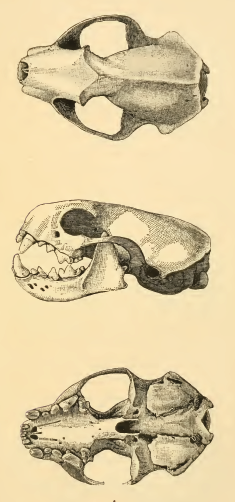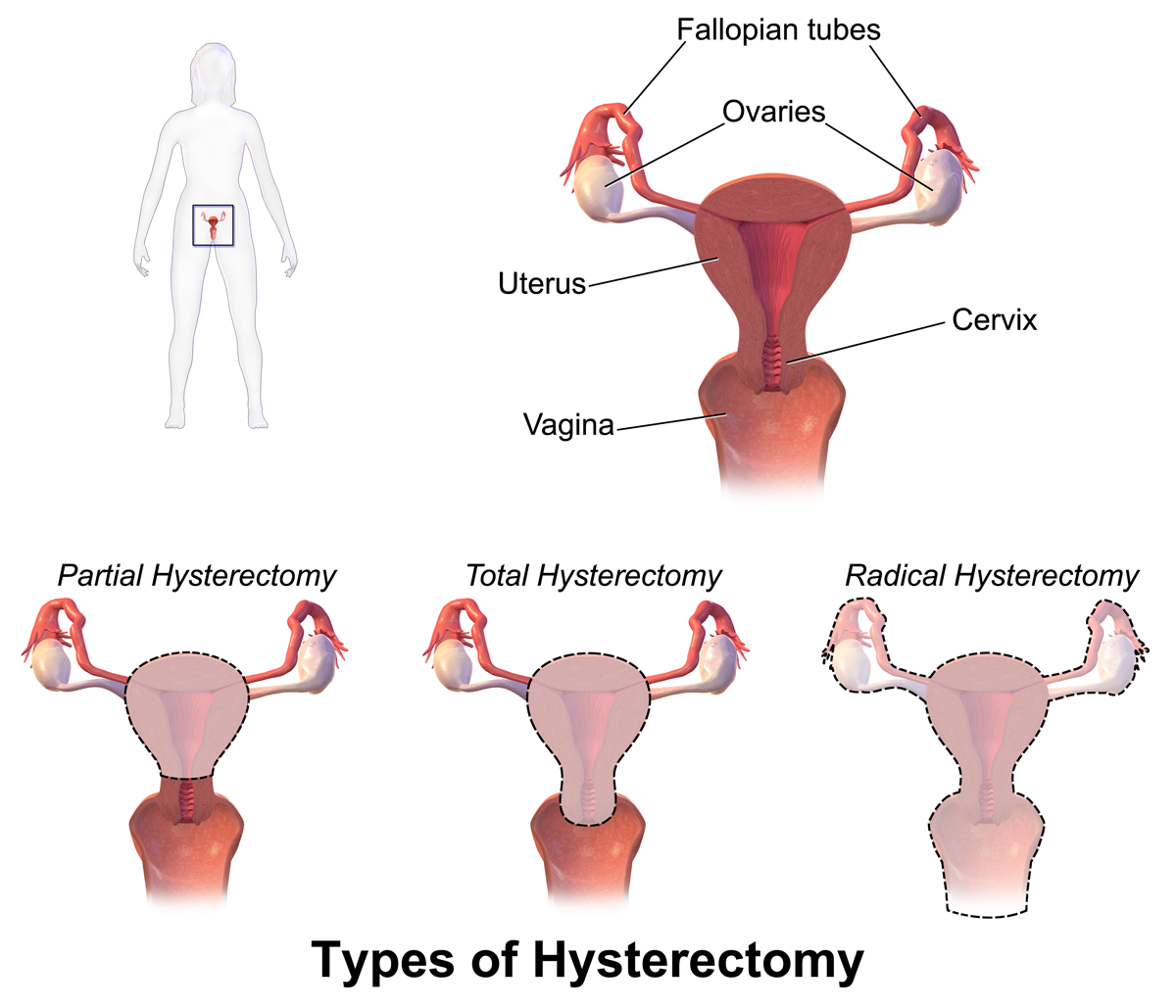|
Elizabeth Ann
Elizabeth Ann (born December 10, 2020) is a black-footed ferret, the first U.S. endangered species to be cloned. The animal was cloned using the frozen cells from Willa, a black-footed female ferret who died in the 1980s and had no living descendants. Black-footed ferrets are the only ferret species native to the United States. The black-footed ferret is one of the most endangered and rarest land mammals in North America; a small pack of them was found in Wyoming in 1981. The limited genetic diversity found among the pack put the species at risk. Scientists sent genetic material from Willa to San Diego Zoo’s Frozen Zoo in 1988. Willa's egg was implanted in a surrogate domestic ferret in November 2020, to avoid putting an endangered ferret at risk. Elizabeth Ann was delivered via c-section on December 10. The efforts were led by Revive & Restore, a biodiversity non-profit. Elizabeth Ann will live in Colorado and be studied for scientific purposes; she will not be released i ... [...More Info...] [...Related Items...] OR: [Wikipedia] [Google] [Baidu] |
Black-footed Ferret
The black-footed ferret (''Mustela nigripes''), also known as the American polecatHeptner, V. G. (Vladimir Georgievich); Nasimovich, A. A; Bannikov, Andrei Grigorovich; Hoffmann, Robert S. (2001)''Mammals of the Soviet Union''Volume: v. 2, pt. 1b. Washington, D.C. : Smithsonian Institution Libraries and National Science Foundation. or prairie dog hunter, is a species of mustelid native to central North America. The black-footed ferret is roughly the size of a mink and is similar in appearance to the European polecat and the Asian steppe polecat. It is largely nocturnal and solitary, except when breeding or raising litters. Up to 90% of its diet is composed of prairie dogs. The species declined throughout the 20th century, primarily as a result of decreases in prairie dog populations and sylvatic plague. It was declared extinct in 1979, but a residual wild population was discovered in Meeteetse, Wyoming in 1981. A captive-breeding program launched by the United States Fish and W ... [...More Info...] [...Related Items...] OR: [Wikipedia] [Google] [Baidu] |
Carr, Colorado
Carr is an unincorporated community and U.S. Post Office in Weld County, Colorado, United States. The ZIP Code of the Carr Post Office is 80612. Some consider Carr a ghost town. Today, just a few old houses remain plus the school house and a few old store fronts. Aside from that there are scattered old foundations throughout the town. There are a few year-round residents but for the most part the town is abandoned. History The town of Carr was established by the Union Pacific Railroad in 1872. Carr was named for Robert E. Carr of the Union Pacific, who managed the construction of the rail line through the town. The Carr Post Office opened on March 26, 1872. From 1920 until 1939, the town carried Old Colorado State Highway 5, which was meant as an access route. However, during this time, routes numbered 1–19 were major cross state highways, making it a somewhat useless route. Geography Carr is located at (40.896257,-104.875488). Just north of the Carr turnoff on I-25 is the ... [...More Info...] [...Related Items...] OR: [Wikipedia] [Google] [Baidu] |
Colorado
Colorado (, other variants) is a state in the Mountain West subregion of the Western United States. It encompasses most of the Southern Rocky Mountains, as well as the northeastern portion of the Colorado Plateau and the western edge of the Great Plains. Colorado is the eighth most extensive and 21st most populous U.S. state. The 2020 United States census enumerated the population of Colorado at 5,773,714, an increase of 14.80% since the 2010 United States census. The region has been inhabited by Native Americans and their ancestors for at least 13,500 years and possibly much longer. The eastern edge of the Rocky Mountains was a major migration route for early peoples who spread throughout the Americas. "''Colorado''" is the Spanish adjective meaning "ruddy", the color of the Fountain Formation outcroppings found up and down the Front Range of the Rocky Mountains. The Territory of Colorado was organized on February 28, 1861, and on August 1, 1876, U.S. President Ulyss ... [...More Info...] [...Related Items...] OR: [Wikipedia] [Google] [Baidu] |
Black-footed Ferret
The black-footed ferret (''Mustela nigripes''), also known as the American polecatHeptner, V. G. (Vladimir Georgievich); Nasimovich, A. A; Bannikov, Andrei Grigorovich; Hoffmann, Robert S. (2001)''Mammals of the Soviet Union''Volume: v. 2, pt. 1b. Washington, D.C. : Smithsonian Institution Libraries and National Science Foundation. or prairie dog hunter, is a species of mustelid native to central North America. The black-footed ferret is roughly the size of a mink and is similar in appearance to the European polecat and the Asian steppe polecat. It is largely nocturnal and solitary, except when breeding or raising litters. Up to 90% of its diet is composed of prairie dogs. The species declined throughout the 20th century, primarily as a result of decreases in prairie dog populations and sylvatic plague. It was declared extinct in 1979, but a residual wild population was discovered in Meeteetse, Wyoming in 1981. A captive-breeding program launched by the United States Fish and W ... [...More Info...] [...Related Items...] OR: [Wikipedia] [Google] [Baidu] |
Cloning
Cloning is the process of producing individual organisms with identical or virtually identical DNA, either by natural or artificial means. In nature, some organisms produce clones through asexual reproduction. In the field of biotechnology, cloning is the process of creating cloned organisms (copies) of Cell (biology), cells and of DNA fragments (molecular cloning). Etymology Coined by Herbert J. Webber, the term clone derives from the Ancient Greek word (), ''twig'', which is the process whereby a new plant is created from a twig. In botany, the term ''lusus'' was used. In horticulture, the spelling ''clon'' was used until the early twentieth century; the final ''e'' came into use to indicate the vowel is a "long o" instead of a "short o". Since the term entered the popular lexicon in a more general context, the spelling ''clone'' has been used exclusively. Natural cloning Cloning is a natural form of reproduction that has allowed life forms to spread for hundreds of millio ... [...More Info...] [...Related Items...] OR: [Wikipedia] [Google] [Baidu] |
San Diego Zoo Global
San Diego Zoo Wildlife Alliance is a not-for-profit organization headquartered in San Diego that operates the San Diego Zoo and the San Diego Zoo Safari Park. Founded in 1916 as the Zoological Society of San Diego under the leadership of Harry M. Wegeforth, the organization claims the largest zoological society membership in the world, with more than 250,000 member households and 130,000 child memberships, representing more than half a million people. The organization's mission is to save species worldwide by uniting their expertise in animal care and conservation science with their dedication to inspiring passion for nature. In its first few decades, the Zoological Society of San Diego worked to establish and build up the San Diego Zoo. Members of the organization formed groups that later became the Association of Zoos and Aquariums (AZA) and American Association of Zoo Keepers. In the early 1970s the society established the San Diego Wild Animal Park in the San Pasqual Valley a ... [...More Info...] [...Related Items...] OR: [Wikipedia] [Google] [Baidu] |
Caesarean Section
Caesarean section, also known as C-section or caesarean delivery, is the surgical procedure by which one or more babies are delivered through an incision in the mother's abdomen, often performed because vaginal delivery would put the baby or mother at risk. Reasons for the operation include obstructed labor, twin pregnancy, high blood pressure in the mother, breech birth, and problems with the placenta or umbilical cord. A caesarean delivery may be performed based upon the shape of the mother's pelvis or history of a previous C-section. A trial of vaginal birth after C-section may be possible. The World Health Organization recommends that caesarean section be performed only when medically necessary. Most C-sections are performed without a medical reason, upon request by someone, usually the mother. A C-section typically takes 45 minutes to an hour. It may be done with a spinal block, where the woman is awake, or under general anesthesia. A urinary catheter is used to drain ... [...More Info...] [...Related Items...] OR: [Wikipedia] [Google] [Baidu] |
Revive & Restore
Revive & Restore is a nonprofit wildlife conservation organization bringing biotechnology to conservation. Biotechnology can be used to increase genetic diversity, build disease resistance, and facilitate adaptation. Headquartered in Sausalito, California, the organization's mission is to enhance biodiversity through the genetic rescue of endangered and extinct species. Revive & Restore has pioneered the “Genetic Rescue Toolkit” for wildlife conservation – a suite of biotechnology tools adapted from human medicine and commercial agriculture that can improve wildlife conservation outcomes. The toolkit includes biobanking and cell culturing, genetic sequencing, and advanced reproductive technologies, such as cloning. The toolkit complements traditional conservation practices, such as captive breeding and habitat restoration. As of 2023, Revive & Restore has supported 54 research grants to projects demonstrating the use of biotechnology for applied conservation. These efforts ... [...More Info...] [...Related Items...] OR: [Wikipedia] [Google] [Baidu] |
Captive Breeding
Captive breeding, also known as captive propagation, is the process of plants or animals in controlled environments, such as wildlife reserves, zoos, botanic gardens, and other conservation facilities. It is sometimes employed to help species that are being threatened by the effects of human activities such as climate change, habitat loss, fragmentation, over hunting or fishing, pollution, predation, disease, and parasitism. For many species, relatively little is known about the conditions needed for successful breeding. Information about a species' reproductive biology may be critical to the success of a captive breeding program. In some cases a captive breeding program can save a species from extinction, but for success, breeders must consider many factors—including genetic, ecological, behavioral, and ethical issues. Most successful attempts involve the cooperation and coordination of many institutions. History Captive breeding techniques began with the first human do ... [...More Info...] [...Related Items...] OR: [Wikipedia] [Google] [Baidu] |
Hysterectomy
Hysterectomy is the surgical removal of the uterus. It may also involve removal of the cervix, ovaries (oophorectomy), Fallopian tubes (salpingectomy), and other surrounding structures. Usually performed by a gynecologist, a hysterectomy may be total (removing the body, fundus, and cervix of the uterus; often called "complete") or partial (removal of the uterine body while leaving the cervix intact; also called "supracervical"). Removal of the uterus renders the patient unable to bear children (as does removal of ovaries and fallopian tubes) and has surgical risks as well as long-term effects, so the surgery is normally recommended only when other treatment options are not available or have failed. It is the second most commonly performed gynecological surgical procedure, after cesarean section, in the United States. Nearly 68 percent were performed for conditions such as endometriosis, irregular bleeding, and uterine fibroids. It is expected that the frequency of hysterectom ... [...More Info...] [...Related Items...] OR: [Wikipedia] [Google] [Baidu] |
United States Fish And Wildlife Service
The United States Fish and Wildlife Service (USFWS or FWS) is an agency within the United States Department of the Interior dedicated to the management of fish, wildlife, and natural habitats. The mission of the agency is "working with others to conserve, protect, and enhance fish, wildlife, plants and their habitats for the continuing benefit of the American people." Among the responsibilities of the USFWS are enforcing federal wildlife laws; protecting endangered species; managing migratory birds; restoring nationally significant fisheries; conserving and restoring wildlife habitats, such as wetlands; helping foreign governments in international conservation efforts; and distributing money to fish and wildlife agencies of U.S. states through the Wildlife Sport Fish and Restoration Program. The vast majority of fish and wildlife habitats are on U.S. state, state or private land not controlled by the United States government. Therefore, the USFWS works closely with private g ... [...More Info...] [...Related Items...] OR: [Wikipedia] [Google] [Baidu] |






